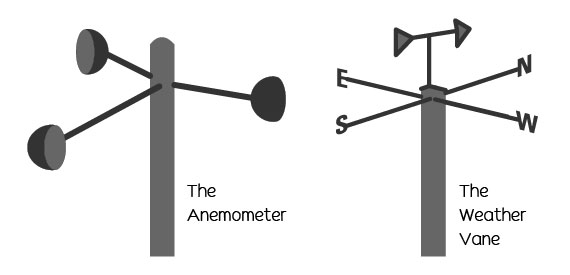- Winds
Wind measurement
Winds come in all directions and speeds. They are measured by their directions and speeds.
Depending on the cause of the winds, they can blow in many directions. Some good examples of wind direction are the Easterly winds, which blow from east to west, and westerly winds which blow from west to east. Some winds also blow from the north, southwards, and from the south blowing northwards.
Anemometers
Anemometers measure the direction of winds. They come in different models but use a similar principle — cups on a bar! It works like this: the faster the wind, the faster the cups rotate. The speed of the rotating cups is measured by a speedometer.

The Weather Vane
Another instrument in wind measurement is the wind vane. It involves a pointer mounted on a vertical shaft. When the wind blows, the arm sways until the pointer faces the direction of the wind.
These days, there is some cool technology that meteorologists use to measure air pressure, speeds, and direction. Traditionally, there is an instrument called a Barometer, which is made of mercury (a liquid metal) with some reading on it. Simply, the mercury is pushed up when air pressure increases.
The readings are recorded in inches of mercury (Hg), and they are converted to millibars (mb) when the data is recorded on maps and other records.
Try this!
Measuring the direction of winds is not hard, even for local winds. Blowing bubbles can easily give you a hint of the direction of the wind.
